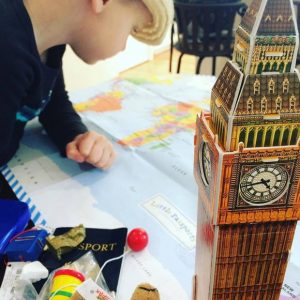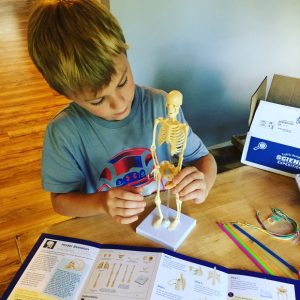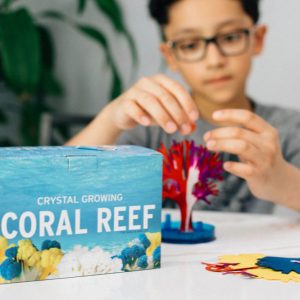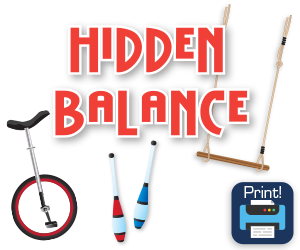Welcome to Science Expeditions Extras!
Dive deeper into your science kit’s theme and experiments. This month, learn a little extra about acrobatics and balance.

Acrobatics & Balance
 Acrobats put on shows of extraordinary feats of balance, but so can nature. In some places, nature creates its own amazing balancing acts, like balancing rocks. A balancing rock is a natural formation made up of one or more large rocks or boulders (sometimes huge ones!) resting on smaller rock formations. Some look like they’re about to fall over even though they’re firmly anchored in the ground. These formations are found all over the world, like in Arches National Park (USA), Matopos National Park (Zimbabwe), or on Mount Kyaiktyiyo (Myanmar) and Kjerag Mountain (Norway). Check out more acrobatic challenges and balance tips and tricks below!
Acrobats put on shows of extraordinary feats of balance, but so can nature. In some places, nature creates its own amazing balancing acts, like balancing rocks. A balancing rock is a natural formation made up of one or more large rocks or boulders (sometimes huge ones!) resting on smaller rock formations. Some look like they’re about to fall over even though they’re firmly anchored in the ground. These formations are found all over the world, like in Arches National Park (USA), Matopos National Park (Zimbabwe), or on Mount Kyaiktyiyo (Myanmar) and Kjerag Mountain (Norway). Check out more acrobatic challenges and balance tips and tricks below!
Gather the household items from the list below before you begin your experiments. Check off items as you go or print the list here. All other materials are included in your kit.
Pendulum
tape
ruler
scissors
1/2 tablespoon
large tray to collect sand (at least 13 in. x 19 in.)
tall surface (like a table or counter)
Balancing Acts
pen or pencil
scissors
ruler
clear tape
markers
Fun Facts
“Acrobatics” comes from the Greek word “akrobatos” (“to go to the highest point”), but the practice of this performing art dates back over 2,500 years, originating in ancient China.
Balancing on a boat at sea can be difficult. Even after coming back to land, people may still feel a swaying or wobbling feeling. Patients who experience this sensation for months or years are said to have Mal de Debarquement Syndrome.
Parts of the inner ear, such as the utricle and saccule, help people stay balanced. They monitor head movement and send information to the brain about the head’s position.

Aunt Charlie’s Corner
Expert tips to complete this month’s science experiments!
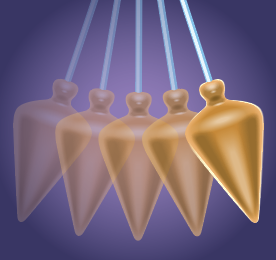 Pendulum
Pendulum
Watch this experiment!
- If you choose to do this experiment outside, make sure it’s not windy. Wind will affect how the pendulum swings.
- Get help from a friend! When pouring the sand into the funnel, it is easier to have another set of hands to pour or block the funnel’s hole.
- Experiment with different heights: the height of the lanyard, the height of the surface the pendulum is attached to and the height from where you drop the pendulum. See how the different heights affect how the pendulum swings and the number of time it completes full swings.
- The more space you have beneath your pendulum, the better. If you do not have a tray large enough to catch the sand, use newspaper or large scraps of paper to collect the sand as it falls. This will make clean-up easier.
 Balancing Acts: Act 1
Balancing Acts: Act 1
- Make sure your binder clips are aligned and clipped to the same end of your acrobat. This will help with balance. You can also experiment by placing the clips in different locations to see how they affect the acrobat’s balance.
- Experiment by balancing your acrobat on all sorts of objects, like on the corner of a table or the end of a spoon.
 Balancing Acts: Act 2
Balancing Acts: Act 2
- Be patient with this experiment; it involves moving the dowel very slowly left or right in tiny increments to keep your acrobats balanced. Take your time finding the balance point—every object has one!
- Adding more weight (acrobats) to your dowel will affect the balance point. Again, slowly move the dowel left and right in small increments to find the new balance point.
- Add tape to the knotted strings at the points where they meet the dowel to help secure the strings and acrobats.
Print and Play
Discover which physics tricks some of the most skilled circus performers use in their acts. Find the scientific term for these tricks in this word search.
Photos
Learn how people and objects in nature display balance!
Flip through the gallery.
Explore More
Click a button below to learn about another science theme.
We Our Community
